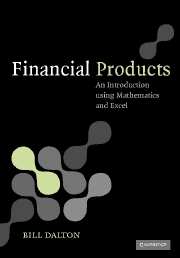Summary
All the calculations in this book can be performed on a calculator. However, they can be performed more efficiently and much faster on a spreadsheet in Excel. If a calculation has to be repeated, then with a spreadsheet in place the repeat calculation is almost immediate. With a calculator, you just have to start again.
In this chapter we present a short introduction to those features of Excel that are used to perform calculations in this book. We recommend, however, that the reader acquires a complete introduction to Excel and learns more about this remarkable facility. To go further with financial mathematics, a knowledge of VBA (Visual Basic for Applications and available through Excel) or some other high-level programming language is essential. (See the texts described in the Introduction.)
The starting point for an Excel calculation is an Excel worksheet (Figure 1).
We have indicated the menu bar, the tool bars and the formula bar. Also, for future reference, we have indicated the chart wizard, the paste function and the name box.
Each cell in a worksheet has a name or a reference. This is letter followed by number. In Figure 1, the cell B6 is illustrated. Observe that the letter identifies the column (B) and the number identifies the row (6).
To enter a number, words or a formula in a particular cell, left click the required cell. The heavy border indicates that this is now the active cell. (The cell has been ‘highlighted’).
- Type
- Chapter
- Information
- Financial ProductsAn Introduction Using Mathematics and Excel, pp. 9 - 33Publisher: Cambridge University PressPrint publication year: 2008



